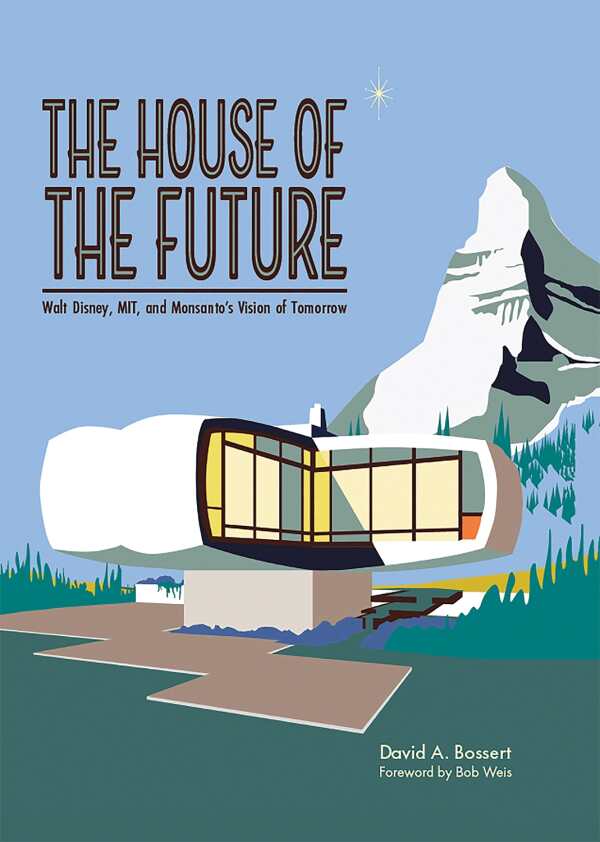The House of the Future
Walt Disney, MIT, and Monsanto’s Vision of Tomorrow
- 2023 INDIES Finalist
- Finalist, Popular Culture (Adult Nonfiction)
The House of the Future is an immersive work of architectural history focused on an ingenious midcentury project.
From the planning stages to its demolition, David A. Bossert’s in-depth architectural history book The House of the Future covers Disneyland’s visionary model home, whose legacy lives on in the innovations that it inspired.
On exhibit from 1957 to 1967, the house’s sleek design and technological marvels reflected Walt Disney’s optimism amid the burgeoning postwar economy and baby boom. Disney predicted a “world of wondrous ideas” to come and, as the initial concept for the house developed, teamed with the plastics-developing Monsanto Company and the Massachusetts Institute of Technology for its construction. A scale model debuted at the 1956 National Plastics Exhibition, reflecting a single-story home that was modular and cross-shaped, with “compound curved reinforced plastic hollow sections cantilevered from a central core.” Following materials testing, the actual house structure was built in New Jersey; the home was then transported to California to be installed at Disney’s Tomorrowland on a foundation of concrete and steel.
Bossert, a longtime Disney animator and the author of various books on Disney-related subjects, works his technical expertise into his accessible coverage of the house, describing in fascinating detail features like height-adjustable bathroom sinks, ambient lighting, video intercoms, and climate-controlled air circulation wafting out scents of pine, sea air, and fresh flowers. Each room and its particulars receives attention, as with the kitchen, where a “Housewife of Tomorrow” demonstrated attributes like melamine counters, a microwave oven and ultrasonic dishwasher, and an irradiated food storage “cool zone.” Nylon draperies and bedspreads designed by Alexander Girard also receive attention alongside the foam-backed vinyl flooring and rugs that were designed to minimize noise. Interior designs are also covered, as with the bright, simple color schemes used to enhance the streamlined furniture pieces, including a flip-flop sofa and a coconut chair.
Throughout, the book emphasizes the house’s versatile materials and eye toward efficient yet enjoyable living. Quirky atomic-age graphics complement the numerous photographs of the house’s exterior and interiors. Architectural drawings, floor plans, and notes about modifications flesh out the project further, while reproductions of visitor brochures and magazine advertisements extolling the virtues of Monsanto’s Lustrex housewares and Resloom shrink-resistant fabric contextualize its cultural impact. Indeed, the House of the Future is also credited with influencing the widespread use of microwave ovens, big-screen televisions, central air systems, and fiberglass bathroom fixtures. And its concept of experimenting with alternate building materials and reconsidering spatial configuration also continued, including in the field of sustainable design. The book also notes that some of its innovative assets become negative factors, though—many of the materials utilized in its construction were full of “forever chemicals” of the sort that can overwhelm the environment.
An immersive work of architectural history, The House of the Future is a singular glimpse at an inventive, even ingenuous, midcentury project.
Reviewed by
Meg Nola
Disclosure: This article is not an endorsement, but a review. The publisher of this book provided free copies of the book and paid a small fee to have their book reviewed by a professional reviewer. Foreword Reviews and Clarion Reviews make no guarantee that the publisher will receive a positive review. Foreword Magazine, Inc. is disclosing this in accordance with the Federal Trade Commission’s 16 CFR, Part 255.

